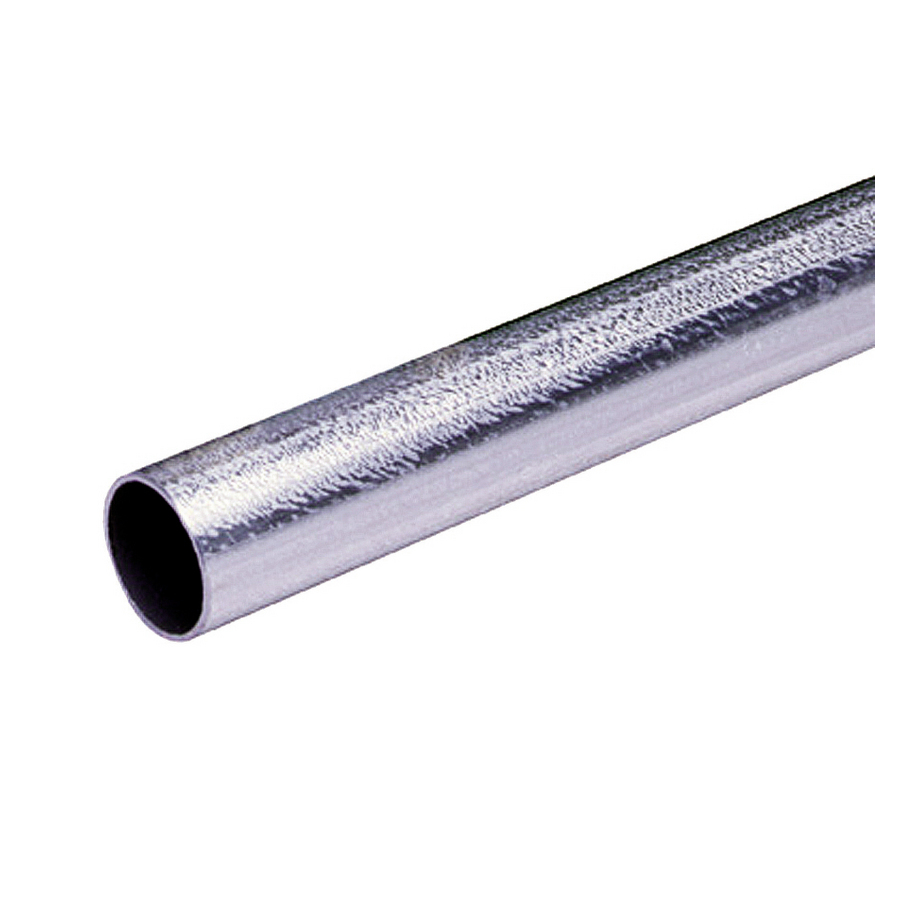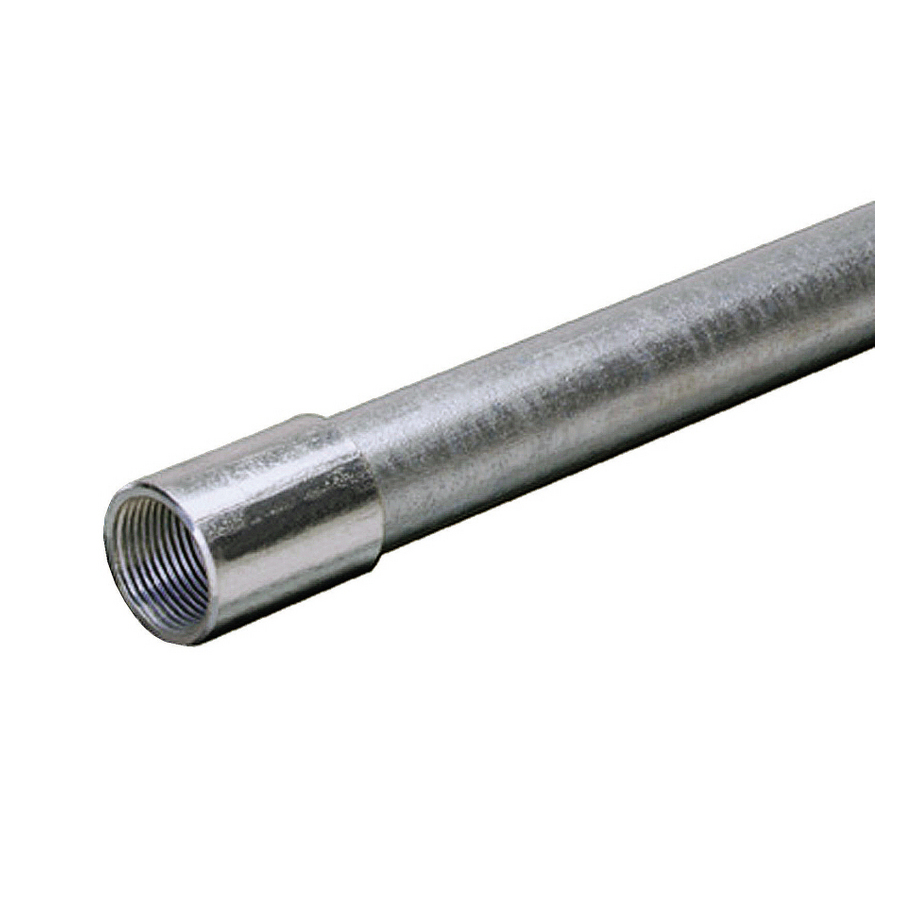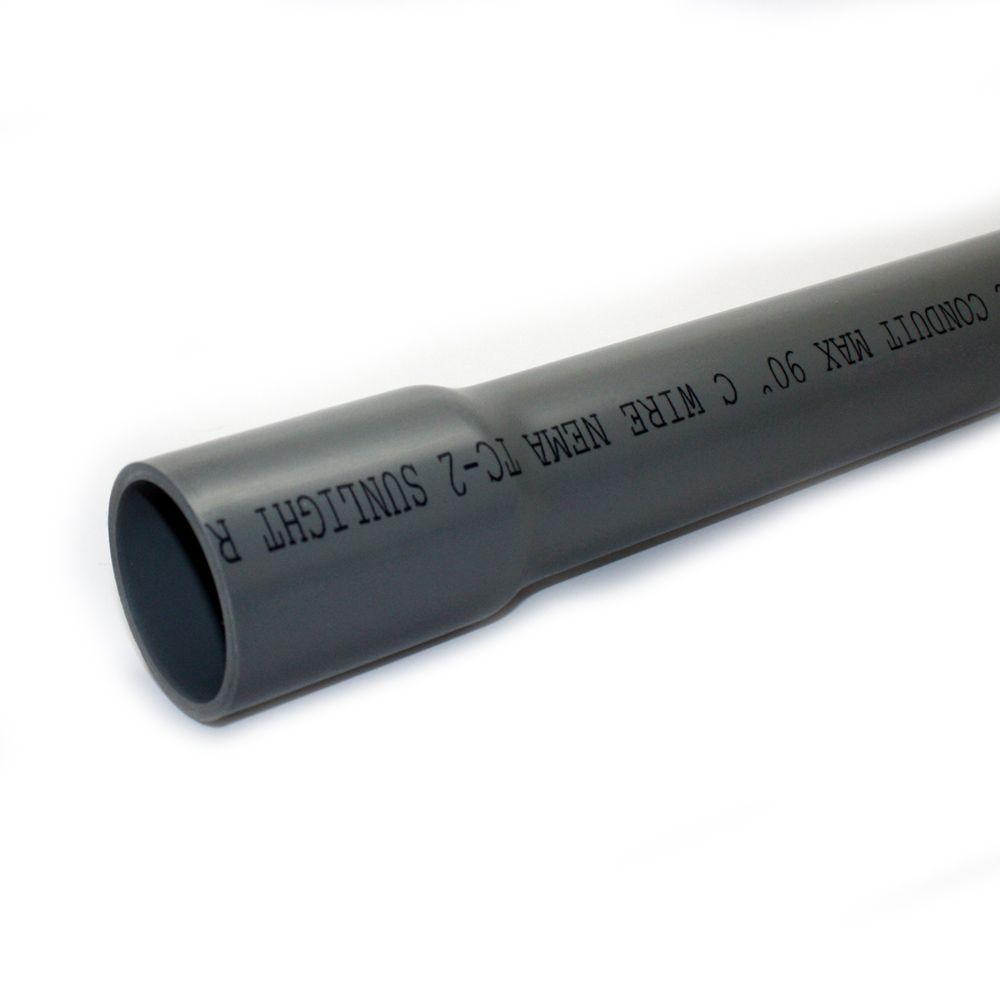Outdoor antennas usually require a mount and mast (pipe).
| |
• Channel Master Antenna Mast Sections
- 5-foot long or 10-foot long
- 1.25" OD (outside diameter) x .049" thick
- 18 gauge galvanized steel
- swaged end facilitates stacking together
|
|
• EMT (electrical metal tubing) in 10-foot lengths
- trade size of 1" = 1.163" OD x .057" thick
- trade size of 1.25" = 1.51" OD x .065" thick
- trade size of 1.5" = 1.74" OD x .065" thick
- galvanized steel
- available locally at Home Depot & Lowes |
|
• IMC (intermediate metal conduit) in 10-foot lengths
- trade size of 1" = 1.290" OD x .093" thick
- trade size of 1.25" = 1.638" OD x .095" thick
- trade size of 1.5" = 1.883" OD x .100" thick
- galvanized steel
- available locally at electrical distributors |
|
• RSC (rigid steel conduit) in 10-foot lengths
- trade size of 1" = 1.315" OD x .126" thick
- trade size of 1.25" = 1.660" OD x .133" thick
- trade size of 1.5" = 1.900" OD x .138" thick
- usually hot-dip galvanized
- available locally at Home Depot & Lowes |
|
• RNC (rigid non-metallic conduit) sold in 10-foot lengths
- trade size of 1" = 1.315" OD x .133" thick
- trade size of 1.25" = 1.660" OD x .140" thick
- trade size of 1.5" = 1.900" OD x .145" thick
- sunlight-resistant schedule 40 PVC (plastic)
- OK indoors or VERY SHORT mast (<4')
- flexible = can bend in wind
- available locally at Home Depot & Lowes |
|
All antenna masts taller than 10 feet should be installed with guy wires for maximum stability and safety.
If you have a directional antenna and want to pull in weak stations from opposite directions, you can use a rotor to turn the antenna towards the broadcast tower of choice.
WARNING: Do NOT mount any antenna in close proximity to or above any power line. If the mount or antenna or cable should fail, no part of the antenna, mount, or cable should be able to contact a power line.
WARNING: Your antenna (sometimes with a fastener on the mast) and feed line MUST be grounded. Your antenna may have instructions for grounding; if so, be sure to follow them. Use a suitable ground wire (or coax feed line that includes a suitable ground wire) to connect the antenna and/or mast to a suitable ground as defined by National Electric Code (NEC). No splices or connections are allowed in the ground wire between the mast and the ground. You should also ground the coax feed line with a grounding block which is also connected to a suitable ground. Grounding MUST be done per the NEC AND any additional local codes in your town. Some towns may also require a building permit and inspection.
Links:
• Channel Master Mounts
• Channel Master General Installation Info
• Winegard Mounts
• Radio Shack Mounting Hardware
|



